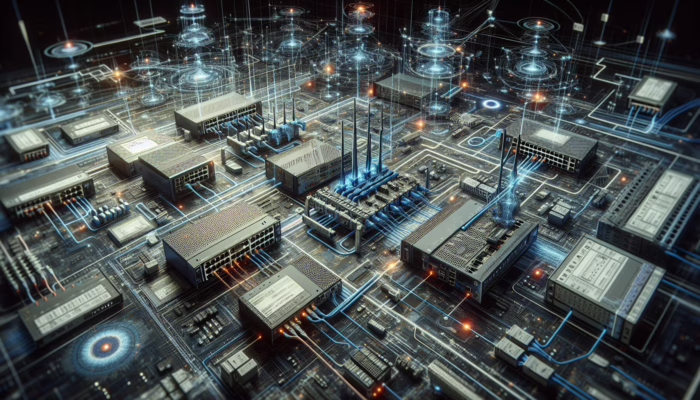Data migration is a vital process for organisations seeking to enhance their systems or transition their data to a modern platform. In the contemporary, rapidly changing digital landscape, businesses are increasingly reliant on Electronic Health Records (EHR) for the efficient storage and management of patient information. The importance of EHR in facilitating data migration within the healthcare industry cannot be overstated. This article explores the ways in which EHR improves the data migration process, the challenges that may arise, and the best practices to ensure a successful migration.
Understand the Data Migration Process Thoroughly
Data migration involves transferring data from one system to another. In the context of healthcare, this usually entails moving patient data from obsolete legacy systems to an EHR platform. This migration is essential for organisations to take advantage of the numerous benefits offered by EHRs, such as improved access to patient records, enhanced communication between healthcare providers, and increased efficiency in delivering care. By transitioning to EHRs, organisations can ensure they are leveraging the latest technology to provide the highest standard of care for patients.
When embarking on data migration, several factors require careful consideration. A deep understanding of the architecture of both the legacy systems and the EHR platform is crucial, as is effectively mapping the data from one system to the other. Ensuring data integrity throughout the migration process is of utmost importance. Thorough planning and analysis are indispensable to facilitate a smooth and successful transition, ensuring that all data is accurately and securely transferred without any loss.
Explore the Vital Role of EHR in Data Migration

- Centralised Data Storage: EHRs offer a centralised repository for the storage of patient data. This setup allows for easy access to patient information, irrespective of the specific location or department within the organisation. During the data migration process, EHRs act as the endpoint for all data being transferred, ensuring a seamless transition from legacy systems.
With a centralised data storage solution, healthcare providers can efficiently access patient records from any location within the organisation. This significantly reduces the necessity to navigate through multiple systems and greatly enhances efficiency in delivering care. Additionally, EHRs guarantee that all patient data is stored securely, facilitating easy retrieval when necessary, which is crucial for maintaining high standards of care and ensuring compliance with healthcare regulations.
- Standardisation of Data: EHR platforms employ standardised data formats and coding systems, such as HL7 and SNOMED CT. This standardisation ensures uniformity and consistency across the migrated data, making it easier for healthcare providers to retrieve and accurately interpret patient information.
The implementation of standardised data formats and coding systems within EHRs enhances data exchange and promotes interoperability among various systems. This integration facilitates seamless sharing of patient information among different healthcare providers, ultimately leading to improved communication and coordination of care. Furthermore, it reduces the risks of errors and inconsistencies in the migrated data, as standardised formats ensure that data is structured consistently across all platforms.
- Enhanced Data Quality: EHRs are equipped with built-in data validation checks and prompts, which significantly mitigate the possibility of errors in migrated data. These checks play a crucial role in identifying and rectifying any inconsistencies or missing information, resulting in enhanced data quality.
Throughout the data migration process, EHRs ensure that data is validated and cleansed before being transferred to the new platform. This meticulous approach helps preserve data integrity and accuracy, which is essential for effective patient care. EHRs also encourage healthcare providers to enter complete and accurate information, thereby minimising the chances of missing or incomplete data. Improved data quality empowers healthcare organisations to make informed decisions and elevate the quality of patient care.
- Interoperability: EHR platforms promote interoperability, enabling disparate systems to exchange and share data effortlessly. During the data migration process, EHRs ensure compatibility between legacy systems and the new platform, guaranteeing a smooth transfer of data without any loss of information.
Interoperability is a critical component of healthcare, as it facilitates the integration of data from various sources and systems. EHRs support the exchange of patient information among different healthcare providers, ensuring continuity of care. Throughout the data migration journey, EHRs play an indispensable role in maintaining interoperability, allowing for seamless data transfer between systems while safeguarding against any loss or corruption of data.
- Data Analytics and Reporting: EHRs offer advanced analytics capabilities, enabling healthcare organisations to extract valuable insights from their data. By migrating data to an EHR platform, organisations can leverage these analytical tools to generate reports, identify trends, and make data-driven decisions that enhance patient care and operational efficiency.
EHRs come with powerful data analytics and reporting features that assist healthcare organisations in deriving meaningful insights from their data. By transitioning data to an EHR platform, organisations can fully utilise these tools to improve patient care and streamline their operations. Data analytics can reveal patterns, trends, and anomalies, empowering healthcare providers to make more informed decisions and optimise their processes for better outcomes.
Recognise Common Challenges in Data Migration Using EHR
While EHRs are essential in facilitating data migration, the process can present various challenges. It is crucial to anticipate and address these challenges to ensure a successful migration:
- Data Mapping: Mapping the data from various legacy systems to the fields in the EHR platform can be a complex task. It requires a comprehensive understanding of the data structure in both the source and destination systems. Developing a thorough mapping plan and enlisting the help of subject matter experts can significantly alleviate this challenge.
Data mapping entails a nuanced comprehension of the data structure found in both legacy systems and the EHR platform. This includes identifying corresponding fields, data types, and their interrelations. Thorough planning and involving subject matter experts can ensure accurate data mapping, thereby minimising the risk of data loss or corruption during the migration.
- Data Cleansing and Transformation: Legacy systems may contain inconsistent or incomplete data formats, necessitating thorough cleansing and transformation before migration. This process involves data validation, deduplication, and standardisation. It is crucial to implement robust data cleansing algorithms and processes to ensure accurate and reliable migration.
Data cleansing and transformation are critical steps in the data migration process using EHRs. Legacy systems often contain data inconsistencies, duplicates, and outdated information. Before migrating this data, it is essential to cleanse and transform it to uphold data integrity and accuracy. This process involves validating data, removing duplicates, standardising formats, and ensuring the completeness of the data being migrated.
- System Downtime and Data Loss: The migration process may result in system downtime, which can adversely affect the organisation’s operations. Careful planning, including scheduling the migration during low-activity periods and having backup systems in place, can help mitigate the risk of data loss while minimising disruption to daily operations.
System downtime during data migration can disrupt the operations of healthcare organisations and potentially lead to data loss. To mitigate this risk, organisations should meticulously plan the migration, considering timing and potential downtime. Implementing backup systems and conducting rigorous testing prior to migration can help ensure data availability, thus minimising the risk of data loss.
- Staff Training and Adoption: Transitioning to a new EHR system requires comprehensive staff training to ensure smooth adoption and effective utilisation of the new platform. Organisations must invest in extensive training programmes and provide ongoing support to guarantee that healthcare providers and staff are proficient in using the new system.
Staff training and adoption are paramount for a successful data migration process with EHR. Healthcare providers and staff must receive training on how to effectively use the new EHR system, covering its functionalities, workflows, and best practices. Ongoing support and training sessions can help address any challenges that arise during the transition, ensuring a smooth adoption of the new system and enhancing overall operational efficiency.
Employ Best Practices for Effective Data Migration with EHR
To secure a successful data migration process with EHR, organisations should follow these best practices:
- Thorough Planning: Comprehensive planning is essential for a successful migration. Develop a detailed project plan, clearly define roles and responsibilities, and set a timeline for each phase of the migration process.
Thorough planning is fundamentally important for a successful data migration. This involves defining the scope of the migration, establishing clear objectives, and creating a detailed project plan. Assigning clear roles and responsibilities, establishing a realistic timeline, and conducting regular progress reviews can ensure that the migration remains on track and is completed within the designated timeframe.
- Data Validation and Testing: Validate and test the migrated data to confirm its accuracy and integrity. Conduct testing in a controlled environment before the new system goes live.
Data validation and testing are crucial steps in the data migration process with EHR. Prior to going live with the new system, it is essential to validate and test the migrated data to ensure both its accuracy and integrity. This involves verifying data mappings, conducting thorough data quality checks, and performing end-to-end testing in a controlled environment. Regular testing and validation throughout the migration process can help identify and resolve any issues before they impact operations.
- Data Backup and Contingency Planning: Implement robust data backup mechanisms to protect against data loss during the migration process. Formulate contingency plans to address any unforeseen issues that may arise during migration.
Data backup and contingency planning are critical to mitigating the risk of data loss during the migration process. Establishing strong data backup measures, such as regular backups and off-site storage solutions, can help ensure data availability and reduce the impact of any unexpected challenges. Developing contingency plans that anticipate potential risks enables organisations to respond effectively and minimise disruptions during the migration.
- Engage Stakeholders: Involve key stakeholders, including healthcare providers, IT personnel, and administrators, throughout the migration process. Their input and feedback are crucial for identifying potential issues and ensuring a seamless transition.
Engaging stakeholders throughout the migration process is essential for achieving successful data migration with EHR. Involving healthcare providers, IT staff, and administrators from the early planning stages through to final implementation can help identify potential issues, gather valuable feedback, and ensure that the migration aligns with the organisation’s objectives and requirements. Consistent communication and collaboration with stakeholders facilitate informed decision-making throughout the migration.
- Change Management: Implement a change management strategy to address staff concerns and promote the adoption of the new EHR system. Maintain regular communication with staff, provide training sessions, and offer ongoing support to facilitate a smooth transition.
Change management is essential for a successful data migration with EHR. Transitioning to a new system can create apprehensions and resistance among healthcare providers and staff. A well-crafted change management strategy that incorporates regular communication, dedicated training sessions, and ongoing support can help alleviate concerns and encourage the adoption of the new EHR system. Equipping staff with the necessary resources and assistance ensures a smooth transition and maximises the benefits of the new system.
In summary, the significance of EHR in facilitating efficient data migration processes is paramount. EHR platforms offer centralised data storage, standardisation, enhanced data quality, interoperability, and advanced analytic capabilities. Nevertheless, the migration process can present challenges such as data mapping, cleansing, and staff training. By adhering to best practices, organisations can effectively navigate these challenges, achieving successful data migration that ultimately enhances patient care and operational efficiency.
Frequently Asked Questions

1. What is data migration in the context of healthcare?
Data migration refers to the process of transferring patient data from legacy systems to an Electronic Health Record (EHR) platform, enabling improved management and access to information.
2. How does EHR streamline data migration processes?
EHR platforms streamline data migration processes by providing centralised data storage, standardisation of data formats, enhanced data quality, interoperability, and advanced analytical capabilities.
3. What are the challenges in data migration with EHR?

The challenges in data migration with EHR include data mapping, data cleansing and transformation, potential system downtime and data loss, as well as the need for adequate staff training and adoption.
4. What are the best practices for successful data migration with EHR?
The best practices for successful data migration with EHR encompass thorough planning, data validation and testing, robust data backup and contingency planning, engaging stakeholders, and implementing effective change management strategies.
Originally posted 2024-05-01 21:09:51.
The post EHR’s Role in Streamlining Data Migration Processes appeared first on Healthcare Marketing Service.




